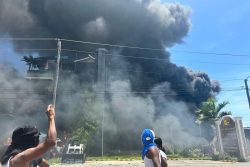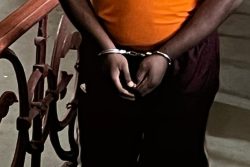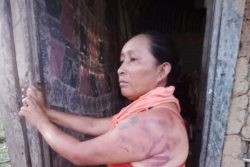Some of us are still trying to get our minds around last Tuesday’s incident allegedly involving seventeen students from two city schools who, reportedly armed with knives, travelled several miles from Georgetown to Leonora, reportedly to settle a score with a student at the Leonora Secondary School.
If we must be thankful that a confrontation that could easily have led to serious injury was averted, we cannot help but be deeply alarmed over what now appears to be incontrovertible evidence that some of our schools have become repositories for violent gangs that have ‘graduated’ from the kind of adolescent muscle-flexing that is commonplace in schools in every society to serious gang violence. This involves “the use of instruments such as ice picks, broken bottles and scissors,” according to a six-month analysis of violence in schools to which Education Minister Shaik Baksh alluded during a presentation to a forum on the subject held in March last year.
What these developments – including the Leonora incident and the occurrences in schools elsewhere in the country – tell us is that there is the very real possibility that we may be witnessing a seamless transition from violence in schools to adult criminal activity. Indeed, recent revelations of teenage boys being involved in adult criminal gangs associated with robberies and murder suggest that we have already arrived at that juncture.
One of the more disturbing aspects of the current trend in school-related violence is the open admission by teachers that the problem is out of their control. It is not an unsurprising admission. There have been cases in which teachers themselves have been physically assaulted by violent students and in one case seriously injured. Here it must be said that children who are subject to no parental control are likely to resent the authority of the school.
The Leonora incident, one feels, makes a compelling case for drawing a line in the sand; for throwing down an official gauntlet, seeking, by every means necessary, to roll back the trend of school-related violence; and if this challenge is beyond the Ministry of Education on its own, it is nevertheless the ministry that must take a robust lead on this issue.
At the March 2010 forum, the Education Minister gave several commitments regarding measures which his ministry intended to take to address the issue of violence in schools. His “plans, strategies and programmes” designed “to promote acceptable behaviour in schools and positive values” included the exposure of head teachers “to more rigorous training in health and family life,” a programme which he said had “already been implemented in many schools in the country,” though he conceded that the results had not been satisfactory. That apart, he announced that his ministry was “redesigning the health and family life education programme to ensure that we incorporate in the curriculum of design, more about conflict management, civic responsibility, democratic participation and peace studies.” This redesigned programme was to have “become a timetabled and examinable subject” with effect from the current school year.
In his address the Minister also alluded to unspecified work being done by his ministry’s fifty School Welfare Officers across Guyana and to the planned establishment of Student Councils at schools which he said would be responsible “for the general welfare of all students, reporting of the teachers’ behaviour and classroom performance, assisting of the school administration in the disciplining of students and assisting the principal in the formulation of school rules and policies.”
At the same forum Home Affairs Minister Clement Rohee made reference to fourteen recommendations put forward at a 2009 National Crime Prevention Conference that related directly to the Ministry of Education.
If there has been much discourse regarding the problem of violence in schools it would be interesting to learn just how many of the measures announced by the Minister of Education a year ago have been put in place, or whether any thought has been given to revamping the existing hopelessly outdated code of conduct and disciplinary measures for schools. That apart, how much collaborative work is currently taking place between the Ministries of Education, Home Affairs and Human Services in order to better understand and more energetically address what we believe to be a critical link between violence in schools and violence and criminal activity in homes and communities?
We agree entirely with the position taken by Minister Baksh at last year’s forum that his ministry “will not hesitate in taking very stern action against those children that exhibit aggressive and violent behaviour in the school system,” and the Leonora incident provides the Minister with an opportunity to demonstrate that he can be held to his word. The Leonora incident also ought to provide the Minister with a reminder of the need to push through with his undertaking to investigate, school by school if necessary, the presence of gangs and dangerous weapons, though the need to address this issue with the requisite professionalism and sensitivity must not be overlooked.
We fear, sadly, that a point has now been reached where the issue of violence in schools must be tackled as a substantive part of our education delivery system through a planned and sustained effort that embraces parents, teachers, communities, the law enforcement and professional agencies and the children themselves. A critical aspect of this initiative will be to more seriously investigate what we can do to help protect children from negative home and community socialization that impact on their behaviour at school, and which, we believe, is largely responsible for the alarming upsurge in school-related violence. We are by no means suggesting that this is anything less than a costly and challenging undertaking. The Leonora incident, however, provides a poignant reminder of the price we may have to pay for looking the other way.









